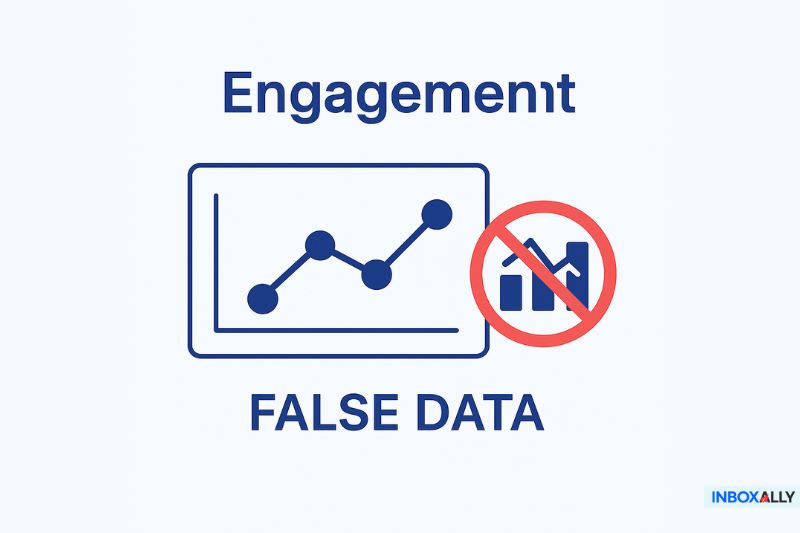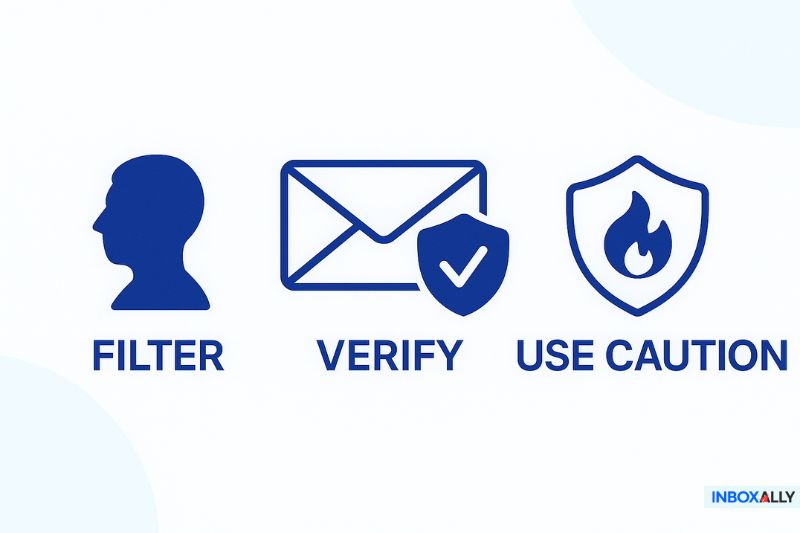Catch-alls are everywhere in B2B. You’re probably sending to them already, and you might not even realise it.
They usually come from scraped lists, enrichment tools, and manual prospecting, and they look just like any other email, which is exactly what makes them problematic.
Generally, they won’t return as a bounce or engage at all, but if you’re not careful, they’ll skew your performance metrics and possibly your whole campaign logic.
So the question isn’t whether catch-alls are “bad” but how you’re treating them. Are you measuring what happens after you send? Are you treating all “deliveries” as successes?
This post will help you understand why catch-all addresses sometimes need a different approach. Let’s start!
What is a catch-all email?
![]()
The name “catch-all” is fairly self-explanatory. These addresses catch everything sent to your domain, whether the intended inbox exists or not. So if someone types sales@company.com instead of sarah@company.com, they won’t get an error message or a bounce. Instead, it will land in some general inbox like info@ or contact@.
Some companies set it up intentionally so they don’t miss leads or support tickets, and others inherit it from a past IT decision nobody bothered to revisit.
The key thing is this: you can’t tell from the outside. The address looks valid, and the message gets accepted. But whether it reaches the right person (or anyone at all) is completely up in the air.
Why do companies use catch-alls?
Some are set up with good intentions, not just leftover from the early 2000s
The idea was this: don’t miss a message just because someone typed in the wrong email. If a potential customer emails marketing@, press@, or steve@ out of the blue, the company still gets it. It’s essentially a backup for leads, partnerships, job applications, whatever. Smaller teams especially liked it—one inbox “to rule them all” with no missed opportunities.
Over time, though, that net started catching mostly junk like spam, cold pitches, and automated nonsense. Some companies forget that the catch-all was even running, and others stopped checking it. Now it’s just sitting there—technically functional, practically useless, and as a sender, you have no idea which it is.
You can’t verify a catch-all email. Period.
Even the best email verification tools can’t confirm catch-all addresses. Not Dropcontact. Not ZeroBounce. Not anyone.
Here’s why: when a domain is set up as a catch-all, its email server accepts anything you send to it. You run an SMTP check, and the server says “accepted”. That response looks the same whether the address is valid or fake.
You can flag it as catch-all, but you’ll never get a straight yes or no. There’s no way to know who, if anyone, is on the other end, and that uncertainty is what makes catch-alls so frustrating to deal with.
Where do catch-alls show up the most
Not all industries use catch-alls equally. You’ll see them far more often in B2B, especially at larger companies or startups with fast-moving teams. Because of the nature of their business model, tech companies, SaaS, and agencies all tend to use catch-alls as a way to make sure no lead or inquiry slips through.
You’ll also find catch-alls more commonly on domains that get a lot of unsolicited emails. These can be HR departments, sales teams, or partnerships@ addresses. For them, missing a lead feels worse than getting spammed, so they’d rather accept everything and sort it out manually (or not at all).
That’s why blindly assuming every email is equal doesn’t work. Some lists are catch-all-heavy by nature. Knowing this upfront helps you spot where more caution is needed, especially if you’re sourcing leads from high-volume directories, LinkedIn scraping tools, or third-party data providers.
The more you understand the context behind the address, the smarter your cold email strategy becomes.
So… should you email catch-all addresses or not?
The opinions on this one are split.
Some marketers cut catch-alls from their lists completely because they find them too risky and uncertain. Others send anyway, figuring the upside is worth the gamble. Both approaches have a point.
If you send it to them:
- You might reach the target person, or someone new in their role.
- You might also be sending to a dead inbox that hasn’t been checked in years.
- And if that inbox is full, you’ll get a bounce eventually, just not right away.
If you don’t send:
- You could be throwing out 20–30% of your B2B data because catch-all domains are everywhere.
- Some of those emails are real, and they convert. You just can’t tell up front.
There’s no clean answer. The smart move is to treat them differently. Segment them or test in small batches, and pay attention to what happens next because blindly sending or blindly cutting both come with consequences.
The damage: Engagement metrics that lie
When you’re on the sending side of the email marketing game, catch-alls can waste your time by giving you skewed engagement metrics.
As we’ve mentioned, it doesn’t bounce as a non existent address, so it looks fine. But they also don’t get opened, clicked, or replied to, which inbox providers take as a hint. When enough of your emails go ignored, they start assuming your content isn’t wanted and they’ll send you to spam, even for contacts who do want to hear from you.
That’s how good cold emails end up buried.
You tweak your subject line, rewrite your intro, and second-guess your offer when the real issue is that your list is full of ghost addresses that were never going to engage in the first place.
InboxAlly can help you rebuild engagement signals by generating real human engagement (opens, replies, moves to inbox), so inbox providers see your emails as wanted. But no tool can undo the damage if you’re consistently emailing dead data, so be cautious!
How to handle catch-alls without nuking your reputation
So, as we’ve seen, catch-alls can be a problem. But you’re a smart marketer, and by reading this guide, you’ll know what to do.
Start by using an email verification tool like InboxAlly‘s free email tester to flag catch-alls without deleting them. The goal isn’t to erase potential leads but to know what you’re dealing with.
Segment them. Keep them separate from your main list. No need to hit them with your best-performing campaign right out of the gate.
Warm things up slowly. Start with verified, engaged contacts first. Once your sender reputation is in a healthy place, send to catch-alls in small test batches. Watch for signs of life—opens, replies, even unsubscribes. Anything that shows someone’s on the other end.
If you get nothing, pull back. If it bounces, remove it. But if it engages, you’ve just rescued a lead you would’ve otherwise thrown out.
Remember, you’re not trying to be perfect here. You’re just managing risk.
Catch-alls aren’t a binary choice
Catch-alls aren’t good or bad. They’re just a different kind of problem. If you’re sending cold emails, you don’t need to avoid them entirely. But you do need a plan for handling them, measuring them, and deciding what stays on your list.
For a better way to control your inbox placement while you test and learn, try out InboxAlly. It helps you build tangible engagement signals (even with uncertain addresses) so your sender reputation holds steady while you experiment.
Feel free to book a demo. We’ll walk you through how this works in practice. Good luck!


